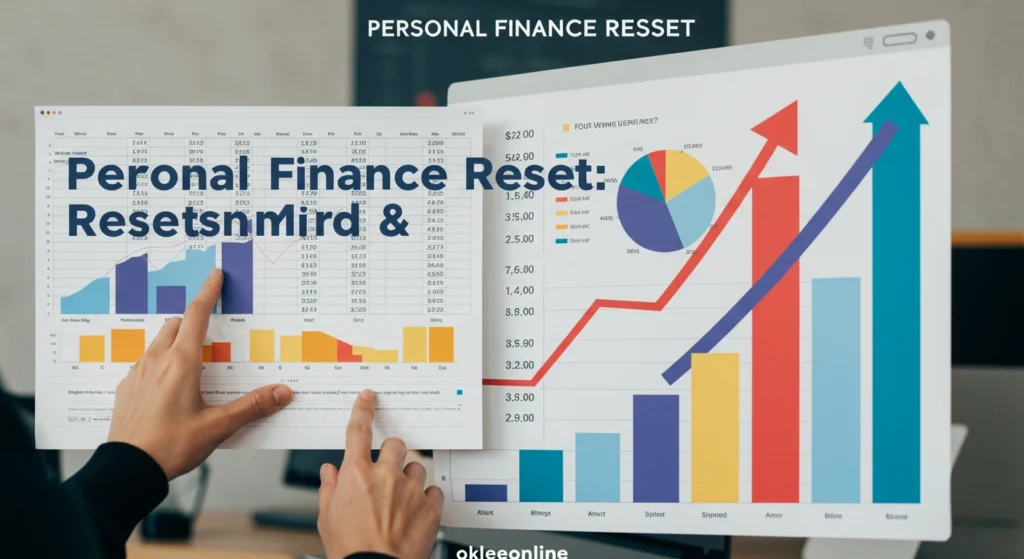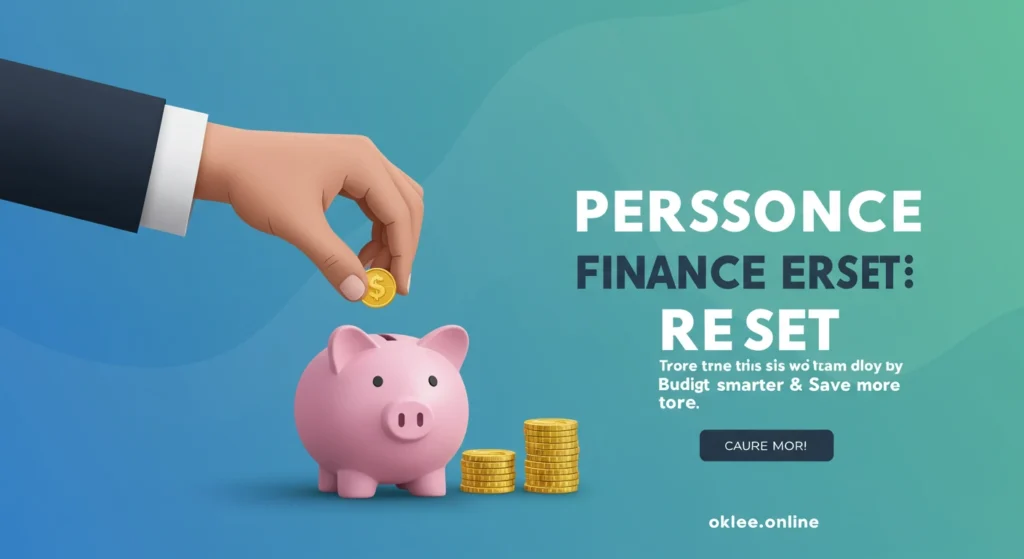In 2025, everything costs more—but your income probably hasn’t caught up. Groceries, rent, streaming subscriptions… it adds up fast. If your bank account feels like it’s always in survival mode, maybe it’s time for a full personal finance reset.
This guide walks you through the exact steps to budget smarter, save more, and get your money working for you—not against you.
Step 1: Know Where Your Money Actually Goes
You can’t fix what you can’t see. Most people underestimate spending on small things like food delivery or subscriptions.
Start With a Simple Spending Breakdown:
- Look at your last 30–60 days of bank transactions
- Sort them into categories: housing, groceries, dining, transportation, subscriptions, debt, etc.
- Add up totals per category
You’ll probably be surprised—especially by “invisible spending” like $3 coffees or $15 subscriptions you forgot about.
Tool tip: Use free apps like Mint, You Need a Budget (YNAB), or PocketGuard to track automatically.
Step 2: Build a Realistic, Flexible Budget
A budget isn’t about punishment. It’s about giving your money a plan.
The 50/30/20 Rule (updated for 2025 inflation):
- 50% → Needs (rent, food, bills)
- 30% → Wants (entertainment, travel, dining out)
- 20% → Financial goals (debt repayment, savings, investments)
If your cost of living is high, shift to a 60/20/20 or 70/10/20 model—just make sure you’re still prioritizing savings and debt.
Step 3: Automate Your Finances
The more you automate, the less likely you are to overspend or miss payments.
- Auto-transfer money into savings/investments right after payday
- Set recurring bill payments to avoid late fees
- Use a separate account for spending vs. savings
Even better? Create sub-savings accounts for specific goals (emergency fund, travel fund, etc.).
Step 4: Cut Expenses Without Feeling Deprived
You don’t have to cancel everything—just make smarter swaps.
Smart Cut Examples:
- Cancel unused subscriptions or switch to annual billing (cheaper)
- Meal prep 3 days/week instead of buying lunch daily
- Share streaming accounts with family/friends
- Negotiate your phone or internet bill (yes, it works)
- Use cashback apps or rewards cards (but don’t overspend)
Keyword tie-in: how to save money, budgeting tips
Step 5: Tackle Debt with a Plan
If debt is draining your paycheck, focus here first. Credit card debt especially.
Two Proven Methods:
- Snowball Method: Pay off smallest balances first → builds momentum
- Avalanche Method: Pay off highest-interest debts first → saves more money long-term
Whichever you pick, make it automatic. Pay more than the minimum, and set alerts to avoid missed payments.
Also check if refinancing or consolidating can lower your interest rate in 2025’s credit market.
Step 6: Build an Emergency Fund
Unexpected expenses will happen—a medical bill, job loss, or car repair. Having 3–6 months of essential expenses saved is the best way to avoid debt.
Start Small:
- Aim for $500 to $1,000 first
- Keep it in a separate high-yield savings account
- Add to it monthly, even if it’s just $50
Step 7: Invest for Your Future (Even If You’re Broke)
You don’t need thousands to invest. You just need consistency.
Where to start in 2025:
- Robo-advisors like Betterment or Wealthfront
- Fractional investing apps like Public or FinancePathways
- Retirement accounts: Roth IRA or 401(k) with employer match
- Index funds and ETFs: Low fees, long-term growth
Even $25/month adds up over time thanks to compounding.
Keyword tie-in: personal finance 2025
Step 8: Upgrade Your Money Mindset
A lot of people stay stuck financially because they believe:
- “I’m just bad with money.”
- “I’ll start saving when I make more.”
- “Investing is too risky for me.”
Truth is, you can learn this. And the sooner you start, the better your future looks.
Try This:
- Read one personal finance book this month (start with I Will Teach You to Be Rich by Ramit Sethi)
- Follow 1–2 financial creators who share real tips (not crypto hype)
- Journal what financial freedom would look like for you—then work backward
Bonus: Money Habits to Try in 2025
✅ Set a monthly “money check-in” on your calendar
✅ Use cash-stuffing or prepaid debit cards if you overspend easily
✅ Switch to a bank with zero-fee accounts and decent APY
✅ Sign up for free credit score tracking
✅ Avoid “lifestyle creep” when your income goes up

Final Thoughts
Resetting your finances isn’t about doing everything at once. Start with tracking your money. Then fix your budget. Then tackle debt. Step by step.
You’ll be shocked how much progress you can make in 3–6 months when you give your money a purpose.
Want more content like this?
Subscribe to oklee.online for simple, honest guides on budgeting, saving, investing, and building long-term wealth without the jargon.



